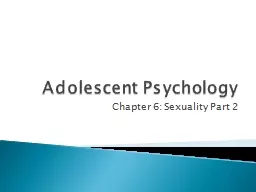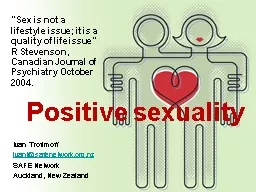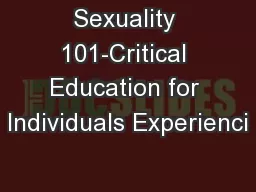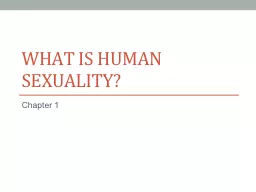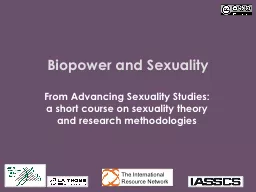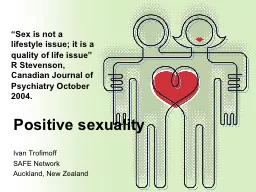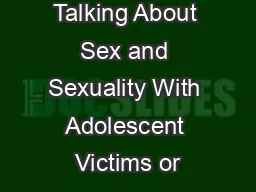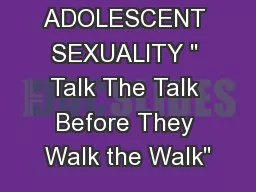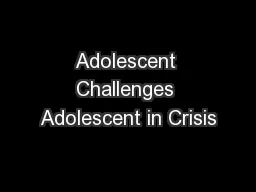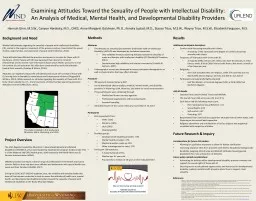PPT-Adolescent Psychology Chapter 6: Sexuality Part 2
Author : giovanna-bartolotta | Published Date : 2018-10-28
Adolescent pregnancy Sexually transmitted infections Forcible sexual behavior Sexual harassment Sexual Problems in Adolescence Once virtually invisible amp unmentionable
Presentation Embed Code
Download Presentation
Download Presentation The PPT/PDF document "Adolescent Psychology Chapter 6: Sexuali..." is the property of its rightful owner. Permission is granted to download and print the materials on this website for personal, non-commercial use only, and to display it on your personal computer provided you do not modify the materials and that you retain all copyright notices contained in the materials. By downloading content from our website, you accept the terms of this agreement.
Adolescent Psychology Chapter 6: Sexuality Part 2: Transcript
Download Rules Of Document
"Adolescent Psychology Chapter 6: Sexuality Part 2"The content belongs to its owner. You may download and print it for personal use, without modification, and keep all copyright notices. By downloading, you agree to these terms.
Related Documents

